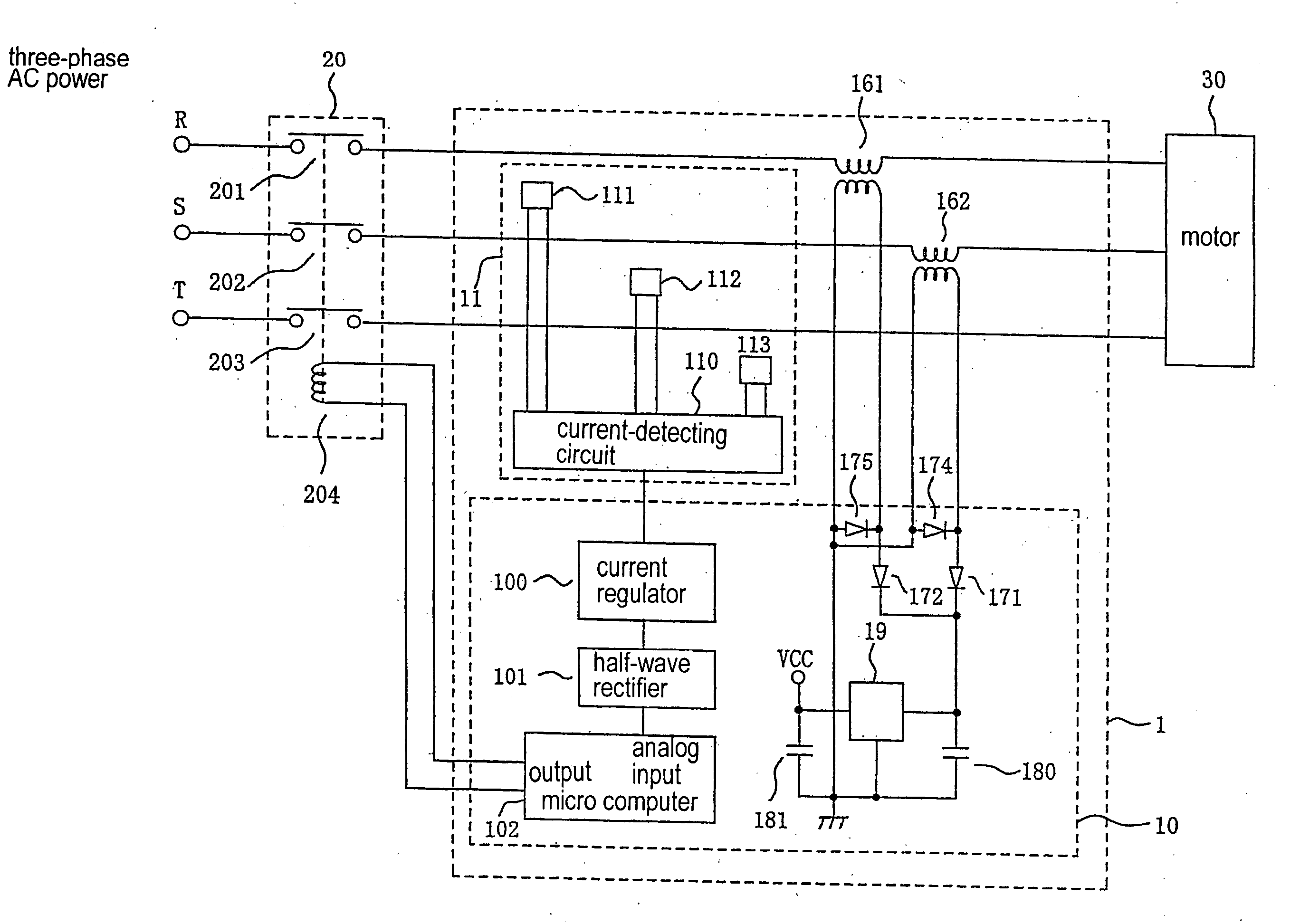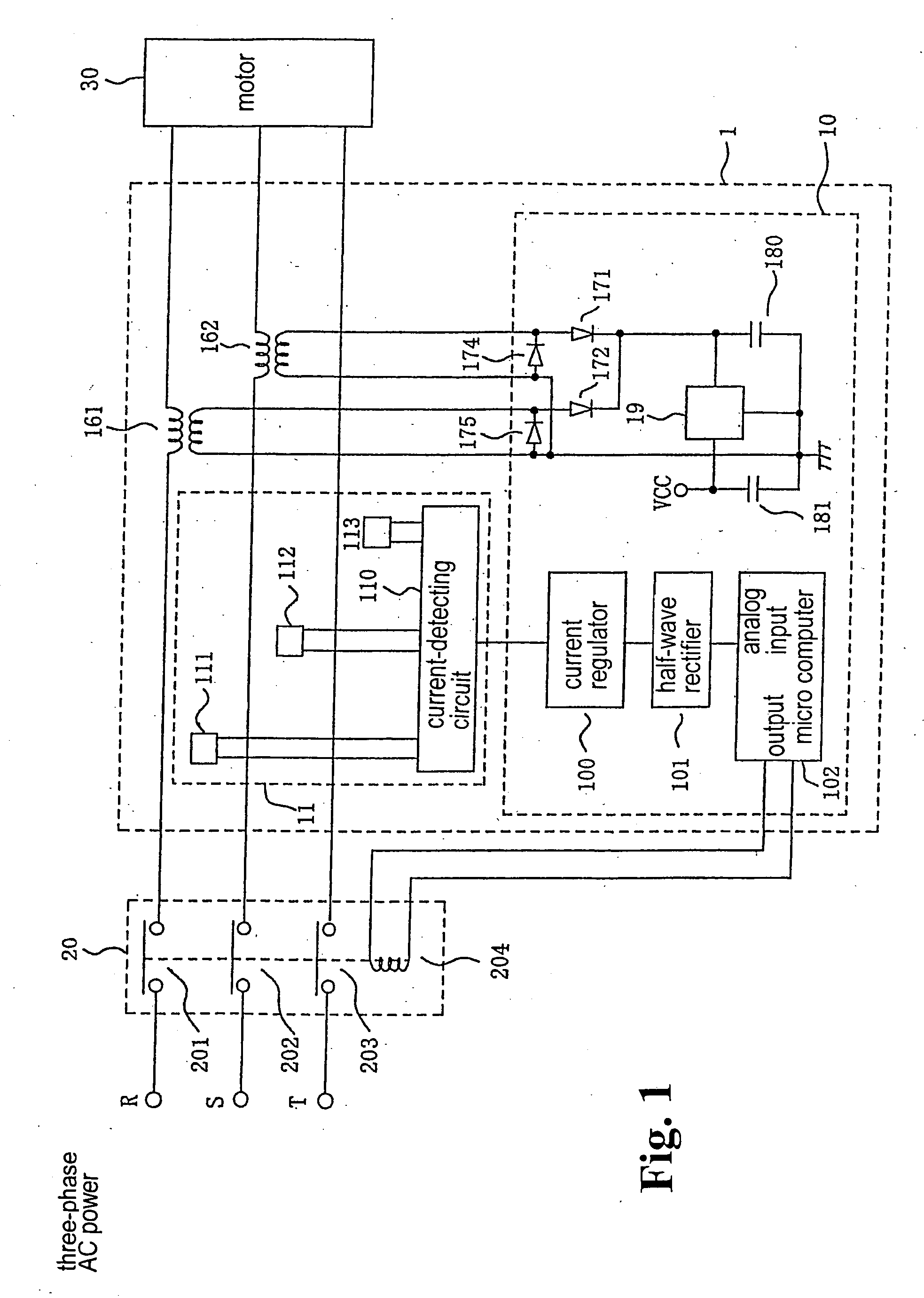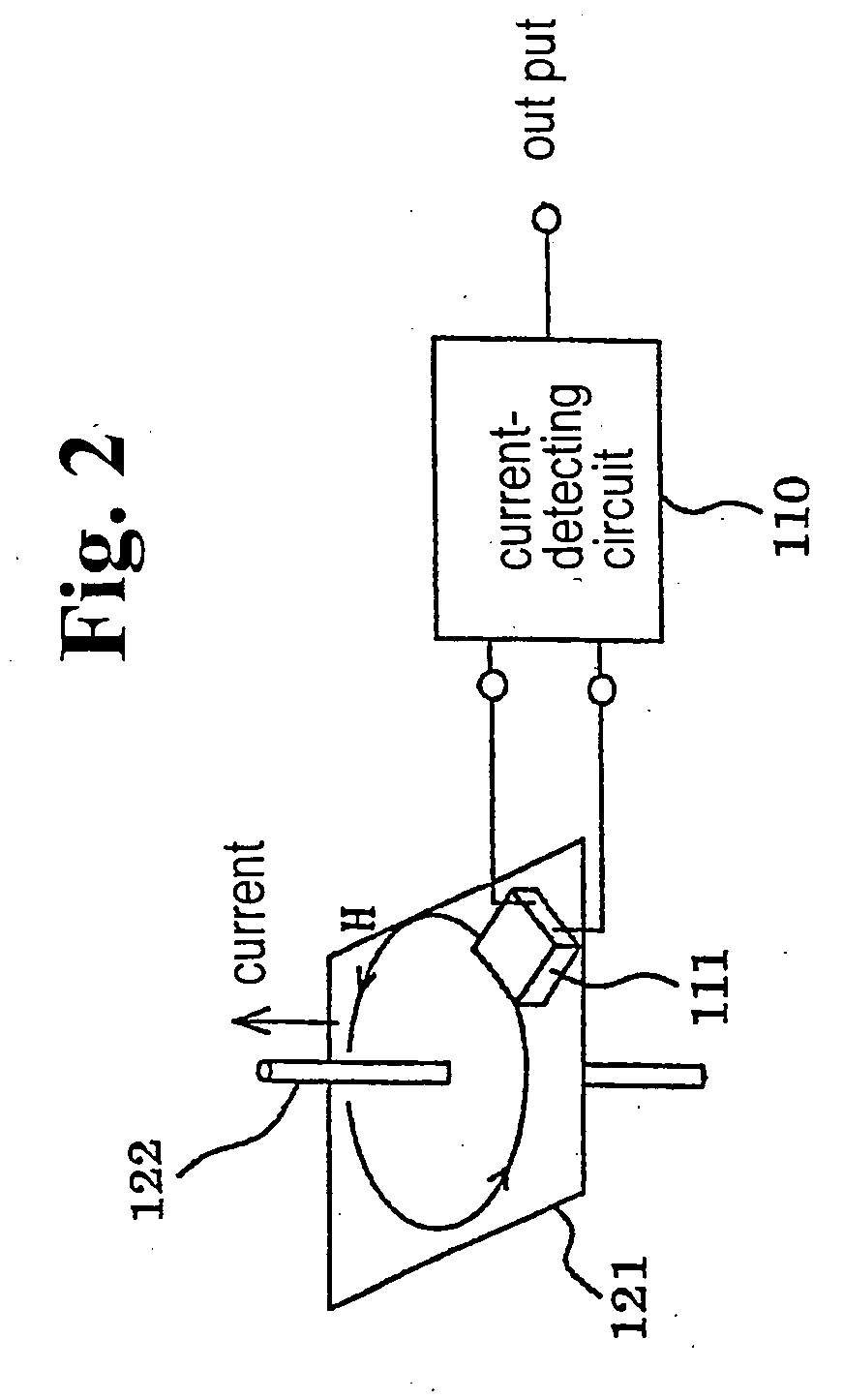Over-current protection device
a protection device and overcurrent technology, applied in the direction of emergency protection for supplying operative power, emergency protection arrangements for limiting excess voltage/current, instruments, etc., can solve the problems of low sensitivity of the magnetoresistive element, inability to obtain a wide range of detecting current, and inability to adjust the condition correctly for a long time. , to achieve the effect of preventing magnetic saturation, increasing the range of current detection, and wide applicability
- Summary
- Abstract
- Description
- Claims
- Application Information
AI Technical Summary
Benefits of technology
Problems solved by technology
Method used
Image
Examples
first embodiment
[0048] Hereunder, the present invention will be described. FIG. 1 is a schematic block diagram of an over-current protection device according to the present invention.
[0049] In FIG. 1, power-supply lines R, S, and T connected to a three-phase AC power-supply source (not shown) are linked with a motor 30 via a three-phase contactor 20 and a pair of power-supply transformers 161 and 162. A current detection unit 11 detects a current supplied via the power-supply lines R, S, and T for each phase. Even when one of the three phases incurs disconnection, it is required that the entire system be operated normally. Accordingly, the embodiment includes a pair of power-supply transformers 161 and 162. However, the transformer may be disposed for each phase. The contactor 20 has three contacts 201, 202, and 203, and each of the contacts is directly connected to the motor 30, or individually connected via primary coils of the power-supply transformers 161 and 162 through the power-supply lines ...
second embodiment
[0061]FIG. 5 is a view showing a second embodiment with an improvement in the non-linear characteristic. As compared with that shown in FIG. 3a, the positive and negative bias magnetic fields are alternately applied to the MI elements 1a, 1b, and 1c, so that a difference in detected voltages upon the application of the individual bias magnetic fields is obtained, thereby improving the output linearity.
[0062] Reference numeral 12 designates frequency-dividing means for dividing a frequency of the signal output from the oscillating means 3. The dividing means 12 outputs a signal containing a frequency lower than that of the AC current fed to the MI elements 1a, 1b, and 1c. Reference numeral 13b designates second current-applying means for alternately applying positive and negative bias magnetic fields in response to the positive and negative output timings delivered from the frequency-dividing means 12. The second current-applying means 13b applies the output signal of the oscillating...
PUM
 Login to View More
Login to View More Abstract
Description
Claims
Application Information
 Login to View More
Login to View More - R&D
- Intellectual Property
- Life Sciences
- Materials
- Tech Scout
- Unparalleled Data Quality
- Higher Quality Content
- 60% Fewer Hallucinations
Browse by: Latest US Patents, China's latest patents, Technical Efficacy Thesaurus, Application Domain, Technology Topic, Popular Technical Reports.
© 2025 PatSnap. All rights reserved.Legal|Privacy policy|Modern Slavery Act Transparency Statement|Sitemap|About US| Contact US: help@patsnap.com



